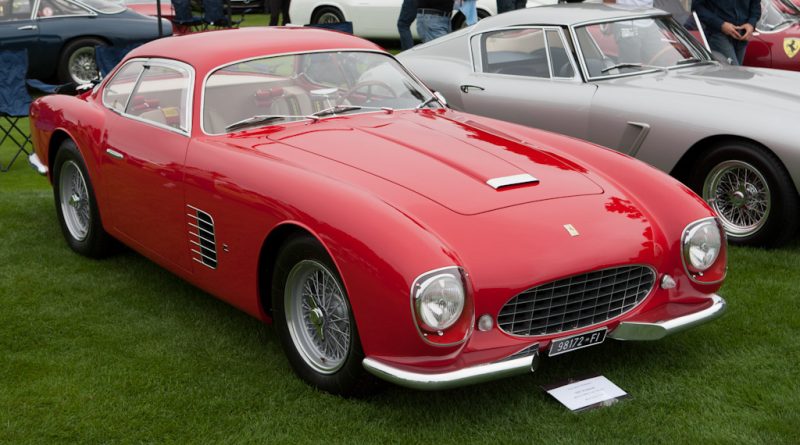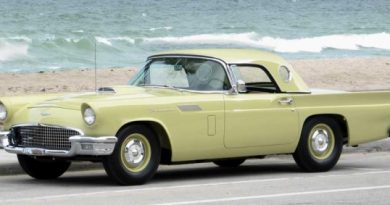1956 Ferrari 250 GT Zagato Coupe
Ferrari and Zagato’s relationship formed one of the most desirable ‘marriages’ in car design, the 250GT Zagato (GTZ). It was their most sucessfull collaboration and only a few were ever made for requesting clients. As the ultimate combination, the GTZ allied the already proven Ferrari 250 Tour de France chassis with Zagato’s curvaceous low drag body. It practically guaranteed success.
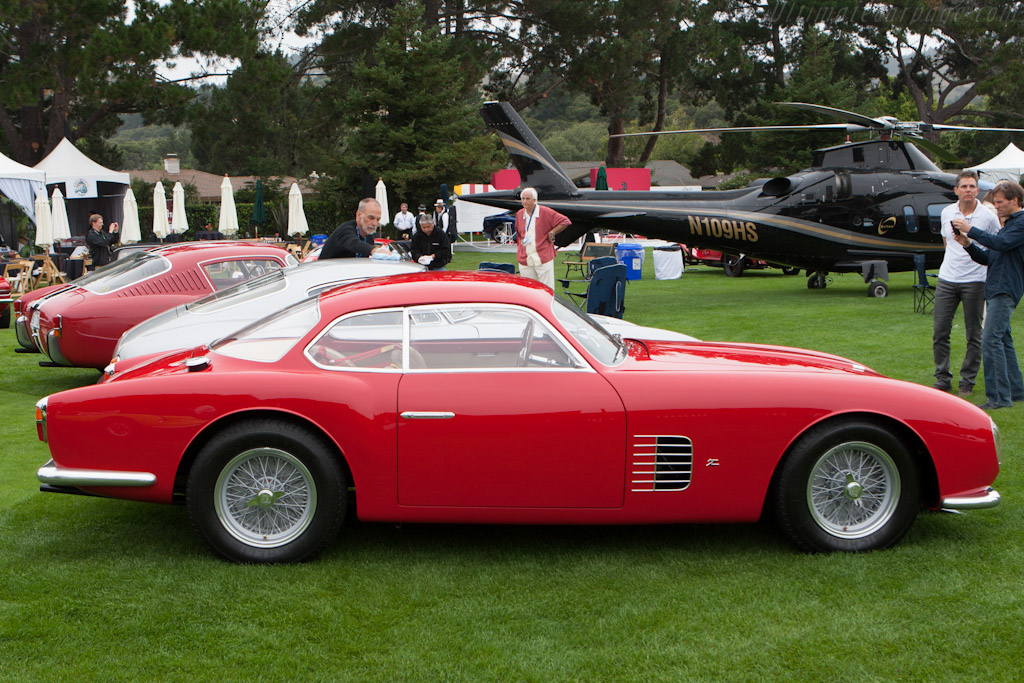
For the Ferrari 250, Zagato used his lightweight, aeronautic techniques which he first adopted when founding his coach building company in 1919. This meant the lightweight and purposeful bodywork on the 250 GTZ not only looked incredible, it helped Camillo Luglio become the Italian sports car champion twice over.
The first GTZ was completed in 1956 and set the basic shape for four more coupes. Each was intended for competition, and some even had stylish details that put them at the forefront of the Concours scene. As Uwe Zagato and his sons were open to suggestions from their clients, the GTZs varied in subtle details, and a few were made as lightweight as Zagato could go.

With its 2953 cc V12 engine, the 250 GT Europa fitted perfectly in the new three litre class, so it was no surprise a ‘Competizione’ version was prepared for the 1955 season. The first competition 250 GTs were very similar to the road cars, but of course stripped of all luxuries. After the first batch of four cars was constructed, the chassis was modified with the front transverse leaf springs replaced by coil springs. Breathing through three Webers, the three litre engine produced between 230 and 260 bhp depending on the version and the state of tune. Pinin Farina bodied the first cars, but shortly after the production was allocated to the local specialist Scaglietti, while the Turin based coach-builder continued to supply the designs. With the exception of five chassis, bodied by Zagato, all subsequent 250 GT competition cars featured Scaglietti built bodies.
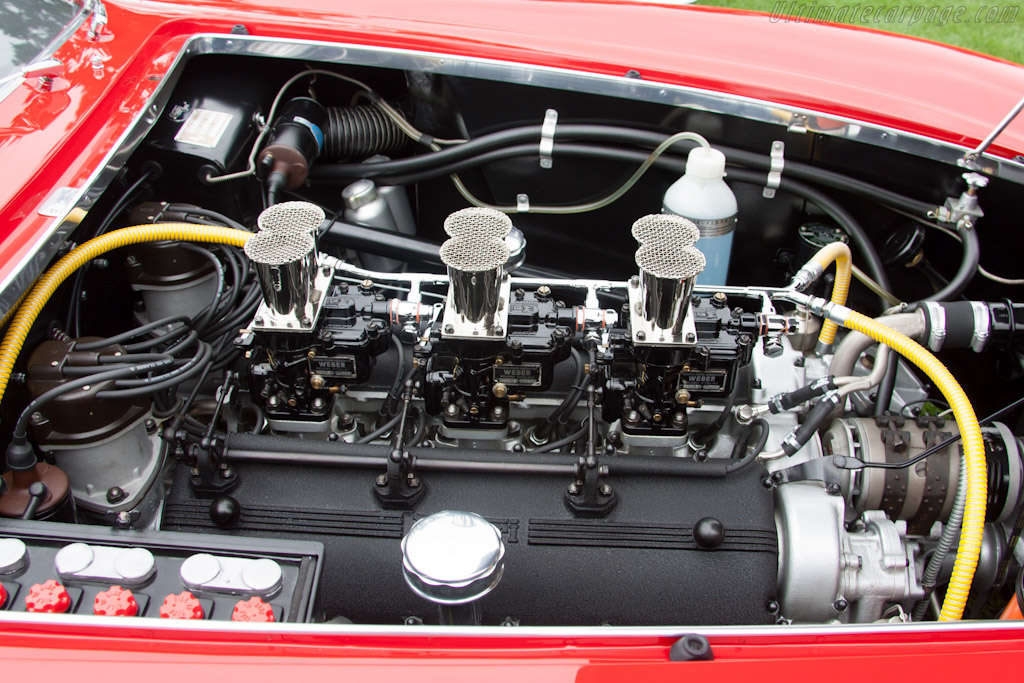
The design of the 1956 car was first showcased on a 250 GT competition show car, bodied by Pinin Farina and shown at the 1955 Paris Salon. The nose was still similar to the 250 MM design, but the round rear-end was discarded and instead the fenders sported small fins. Over the next three years the basic design remained the same, but there are three distinguishable versions, identifiable by the number of louvres fitted in the sail panel. The first version featured no fewer than fourteen, followed by three and one in the final form. Other more subtle changes to the design of the body included a variety of headlight locations and the use of a warm or cold air intake through a bonnet blister. If equipped with a cold air intake, a large dish was fitted around the Carburetors that sealed perfectly to the bonnet with a rubber strip to increase the ‘ram-effect’.
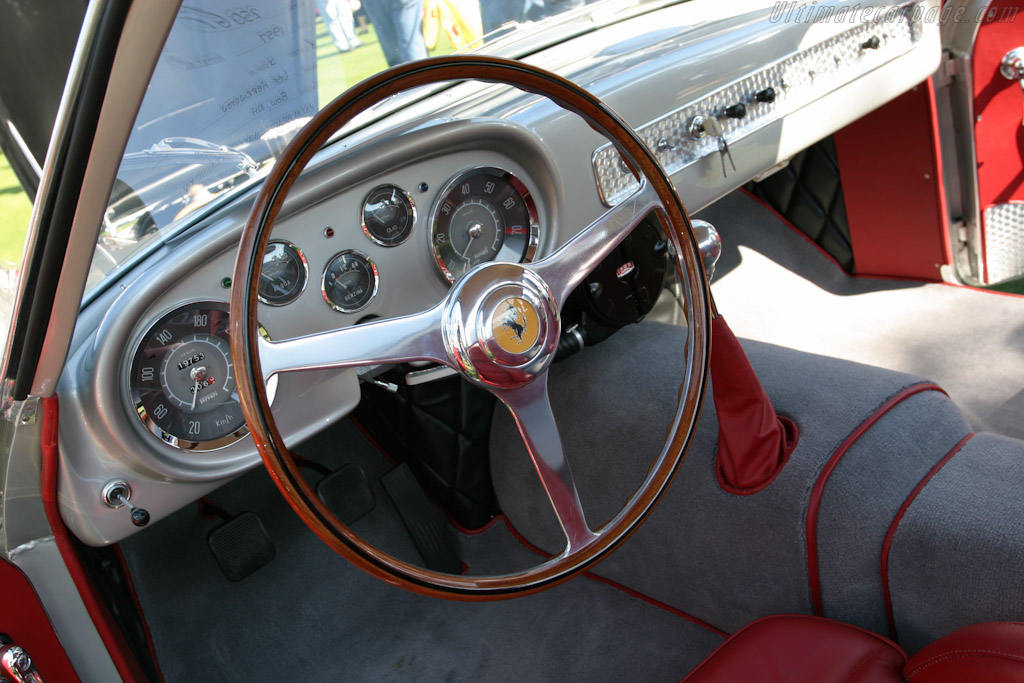
Underneath, the sanction car is mechanically and structurally identical – but it is, of course, somewhat less valuable than the USD 10 million originals would be, if ever they came up for sale.

We’re not saying it’s cheap, mind – just ‘more affordable’, ‘accessible’ and with ‘investment potential’.

